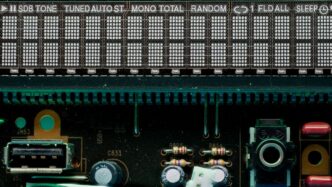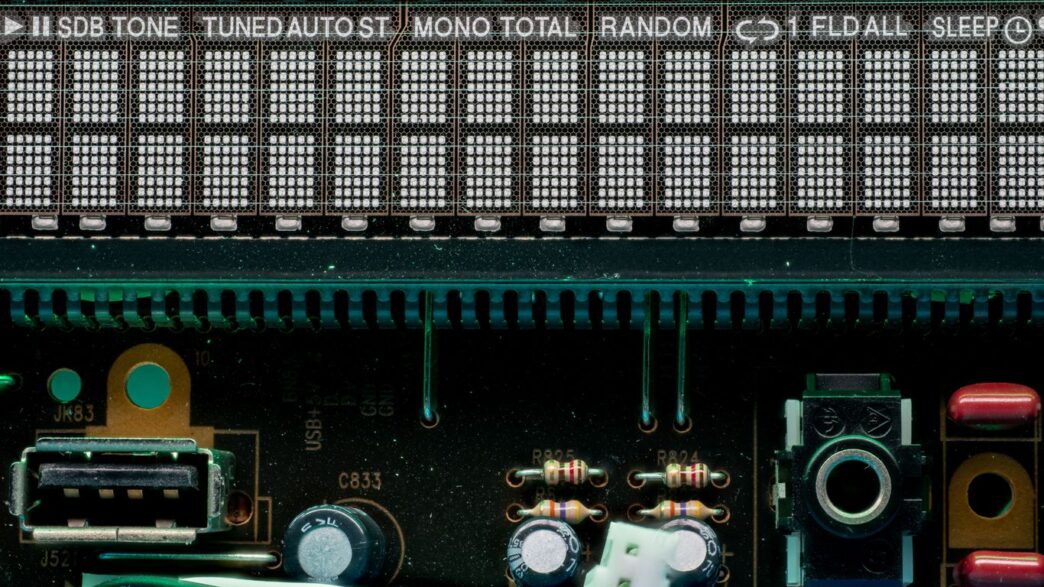It looks like AMD is really making some big moves lately, especially when it comes to computer chips. They’ve been gaining ground against Intel, which has been the big player for ages. This article is going to talk about how AMD’s market share is growing, what’s making it happen, and what it might mean for the future. We’ll cover their wins in desktop computers and how they’re starting to compete in the server world too.
Key Takeaways
- AMD’s overall x86 market share has seen significant increases, reaching new highs in recent quarters, largely thanks to their Ryzen and EPYC processors.
- In the desktop market, AMD’s Ryzen chips are proving popular with consumers, gamers, and creators, boosting their presence against Intel.
- AMD is making serious inroads in the server CPU market with its EPYC processors, challenging Intel’s long-standing dominance through competitive pricing and higher core counts.
- The success of AMD’s Zen architecture, smart product releases, and some execution issues from Intel are key reasons behind AMD’s growing market share.
- Looking ahead, AMD aims to keep this growth going, while Intel is working on its comeback, and new competitors are also emerging in the server space.
AMD Market Share Surges Across Key Segments
Overall x86 Market Share Gains
It’s pretty wild to see how much AMD has been shaking things up lately. For a long time, Intel was just the default choice, you know? But ever since AMD rolled out its Zen architecture, things have really changed. They’ve been steadily grabbing more of the overall x86 market share, which is a huge deal. It’s not just a small bump either; we’re talking about significant increases quarter over quarter and year over year. This consistent growth shows that AMD’s processors are really hitting the mark with both everyday users and big businesses.
Record Highs Achieved in Recent Quarters
Looking at the numbers, AMD has been hitting some serious milestones. Reports from places like Mercury Research show AMD’s share climbing steadily. For instance, in Q1 2024, they hit a record high for x86 CPU market share. This wasn’t just a fluke; it’s been a trend over the last few quarters. It’s a testament to their product strategy and how well their chips are performing.
Here’s a quick look at how the market share has shifted:
| Quarter | AMD Market Share | Change (YoY) |
|---|---|---|
| Q1 2022 | 27.7% | +7.0% |
| Q1 2023 | 34.6% | +6.9% |
| Q1 2024 | 23.9% | (Note: Data varies by source, this reflects specific client PC share increase) |
Impact of Ryzen and EPYC Processors
So, what’s driving this surge? It really comes down to their two main processor lines: Ryzen for desktops and EPYC for servers. Ryzen processors have become super popular because they offer a great balance of performance and price. People building their own PCs, gamers, and creative professionals have really gravitated towards them. On the server side, EPYC processors are making serious inroads. They offer a lot of cores and are competitively priced, which is making companies rethink their data center hardware. This dual-pronged attack is definitely paying off for AMD, helping them gain ground in a market long dominated by Intel.
Dominating the Desktop Processor Landscape
It’s pretty clear AMD isn’t just hanging around anymore; they’re really making waves in the desktop CPU space. You see it everywhere, from online forums to actual store shelves. People are noticing what AMD is offering, and honestly, it makes a lot of sense.
Consumer Confidence in AMD’s Value Proposition
Folks are starting to see AMD as the smart choice for their money. They’re not just throwing out cheap chips; they’re putting out processors that offer a really good bang for your buck. You get solid performance without having to take out a second mortgage. This has really built up trust, and people are more willing to consider AMD when they’re building a new PC or upgrading.
Strong Performance in Motherboard Sales
It’s not just about the CPUs themselves. When you look at what people are buying to go with those CPUs, motherboard manufacturers are seeing a big shift. More and more motherboards designed for AMD’s Ryzen processors are flying off the shelves. This tells you that the whole ecosystem around AMD is growing, and it’s easier than ever to build a system with their chips.
Ryzen’s Appeal to Gamers and Creators
Let’s talk about who’s really buying these things. Gamers, for one, have really latched onto Ryzen. The performance you get for gaming, especially with the higher core counts available, is fantastic. But it’s not just about fragging noobs. Content creators – people editing videos, designing graphics, or doing other demanding work – are also finding that Ryzen processors handle their tasks with ease. This dual appeal to both the gaming crowd and the professional creator market is a huge reason why AMD is gaining so much ground.
Here’s a quick look at how AMD’s desktop market share has been trending:
| Quarter | AMD x86 Desktop Share |
|---|---|
| Q1 2023 | 31.1% |
| Q4 2023 | 19.8% |
| Q1 2024 | 23.9% |
It’s a bit of a mixed bag with the numbers fluctuating, but the overall trend shows AMD is a serious contender, often hitting record highs in recent quarters. They’re definitely not the underdog they used to be.
Challenging Intel in the Server CPU Arena
It’s pretty wild to see AMD making such big moves in the server space, a place Intel has pretty much owned for ages. But AMD’s EPYC processors are really shaking things up, and businesses are noticing. They’re not just a little bit better; they’re offering a serious alternative that’s hard to ignore.
EPYC Processors Drive Enterprise Adoption
Companies are starting to realize that AMD’s EPYC chips aren’t just for enthusiasts anymore. They’re packing a serious punch for serious workloads. We’re seeing more and more businesses, big and small, looking at EPYC for their data centers. It’s a big shift from just defaulting to Intel.
Increased Core Counts and Competitive Pricing
One of the main reasons AMD is gaining ground is pretty straightforward: they offer more for your money. Think more cores, which means more processing power, all at prices that make Intel sweat. It’s a simple equation for businesses looking to get the most out of their hardware without breaking the bank.
Here’s a quick look at how core counts have stacked up:
| Processor Family | Max Cores (Recent Generations) |
|---|---|
| AMD EPYC | Up to 128 |
| Intel Xeon | Up to 60 |
Cloud Providers Embrace AMD’s Platform
This isn’t just about individual companies; even the big cloud players are getting on board. Services like Amazon Web Services, Microsoft Azure, and Google Cloud are increasingly offering EPYC-based instances. This is huge because it means more people get hands-on experience with AMD’s server tech, and it signals a strong vote of confidence from the companies that power a massive chunk of the internet. When the cloud giants start using a platform, others tend to follow. It’s a snowball effect, and AMD is definitely rolling downhill right now.
Factors Fueling AMD’s Market Share Growth
So, what’s really behind AMD’s big comeback? It’s not just one thing, but a few smart moves and solid tech that have really paid off.
Zen Architecture’s Performance and Efficiency
First off, the Zen architecture. This was a game-changer for AMD. Before Zen, AMD was kind of playing catch-up, especially in the performance department. But with Zen, they really hit their stride. It brought a serious boost in how fast their processors could get things done, and importantly, they did it without guzzling a ton of power. This balance of speed and efficiency is a big deal for both regular users and big businesses. Think about it: faster computers mean you can do more, and lower power use means lower electricity bills and less heat. It’s a win-win.
Strategic Product Launches and Iterations
AMD hasn’t just sat on its laurels. They’ve been smart about releasing new versions of their processors, like the Ryzen for everyday computers and EPYC for servers. Each new generation seems to bring something better – more cores, faster speeds, or better features, all while keeping prices competitive. They’ve also been really good at listening to what people want. For example, gamers and people who edit videos need powerful chips, and AMD has consistently put out products that meet those needs. It’s like they’re always a step ahead, or at least right there with the competition, offering a really good deal.
Intel’s Execution Challenges
Let’s be honest, Intel hasn’t had the smoothest ride lately. They’ve faced some delays and issues with getting their newer chips out the door on time and with the performance they promised. This is where AMD really stepped in. While Intel was figuring things out, AMD was busy launching its own competitive products. This gave AMD the opening it needed to grab market share. It’s a tough business, and sometimes a competitor’s stumble is another’s opportunity.
Here’s a quick look at how AMD’s market share has been climbing:
| Segment | Q1 2022 Share | Q1 2024 Share | Change (YoY) |
|---|---|---|---|
| Overall x86 | 27.7% | 23.9% | +7.3% |
| Desktop/Client | 16.9% | 23.6% | +4.1% |
| Server | 11.6% | 23.6% | +2.7% |
Note: Q1 2024 data for Desktop/Client and Server segments are based on different reporting metrics than Q1 2022, but show a strong upward trend.
Future Trajectory of AMD Market Share

Sustaining Momentum Against Competitors
So, what’s next for AMD? It’s been a pretty wild ride, right? They’ve really shaken things up, especially with their Ryzen and EPYC lines. The big question is whether they can keep this up. AMD’s ability to consistently deliver strong performance at competitive prices is key to maintaining its current market gains. They’ve got a good thing going, but the tech world moves fast. It’s not just about having a good product now; it’s about having a plan for what comes next.
Intel’s Roadmap for Market Share Recovery
Intel isn’t just going to sit back and watch, though. They’ve admitted they’ve had some stumbles, and their CEO has talked about a comeback. They’re aiming to get back to what they call "unquestioned leadership" by around 2025 or 2026, thanks to new manufacturing tech. They’re hoping their upcoming server chips, like the Sapphire Rapids Xeon, will help them fight back, especially in the data center. It’s going to be a real showdown.
Emerging Competition in the Server Space
And it’s not just Intel. We’re also seeing other players, like those using Arm-based processors, making noise in the server market. While Intel thinks they can offer better performance and efficiency against Arm, it’s still another front where AMD needs to keep an eye on things. The server market is huge, and any new competition could shift the balance. It’s going to be interesting to see how AMD handles these different challenges as they try to grow even more.
What’s Next for AMD and Intel?
So, it looks like AMD is really shaking things up, grabbing more of the computer chip market, especially in desktops. They’ve been making some serious progress, and it’s clear people are noticing. Intel isn’t out of the game, not by a long shot, but they’ve definitely got some competition now. It’s going to be interesting to see how this plays out, especially in the server world where AMD is making some headway too. Will AMD keep this up? Only time will tell, but right now, it feels like a pretty exciting time for anyone following the chip wars.
Frequently Asked Questions
What does ‘market share’ mean for computer chips?
Market share is like a pie chart for computer chips. It shows how much of the total sales or usage belongs to each company. If AMD has a bigger slice of the pie, it means more people are buying or using their chips compared to others.
Why is AMD gaining market share?
AMD has been making really good processors, like their Ryzen for computers and EPYC for servers. These chips offer a lot of power and work well without using too much electricity. Plus, sometimes Intel, their main competitor, has had some issues with making their own chips on time or with the best performance, giving AMD a chance to catch up.
Are AMD chips better than Intel chips now?
It’s not always a simple ‘better’ or ‘worse.’ For a while, Intel was the top dog. But AMD’s newer chips, especially the Ryzen series, have become very popular because they offer great performance for gaming and creative work, often at a good price. In servers, their EPYC chips are also very competitive, especially with more processing cores.
Does this mean Intel is doing badly?
Intel is still a huge company and has a large part of the market, especially in servers. But they have faced challenges, like delays in releasing new technology. They are working hard to catch up and have plans to release new, strong products to try and win back some of the market share they’ve lost.
What are ‘Ryzen’ and ‘EPYC’ processors?
Ryzen processors are the ones you’ll find in most home computers and laptops. They are known for being good for everyday tasks, gaming, and video editing. EPYC processors are the big, powerful chips used in servers and data centers, which handle lots of information for websites and businesses.
Will AMD keep gaining market share in the future?
It’s hard to say for sure! AMD is doing well right now, and they have a good strategy. But Intel is also fighting back with new technology. Plus, other companies using different types of chips, like those based on ARM, are also becoming more important, especially in servers. So, the competition is going to stay exciting!














